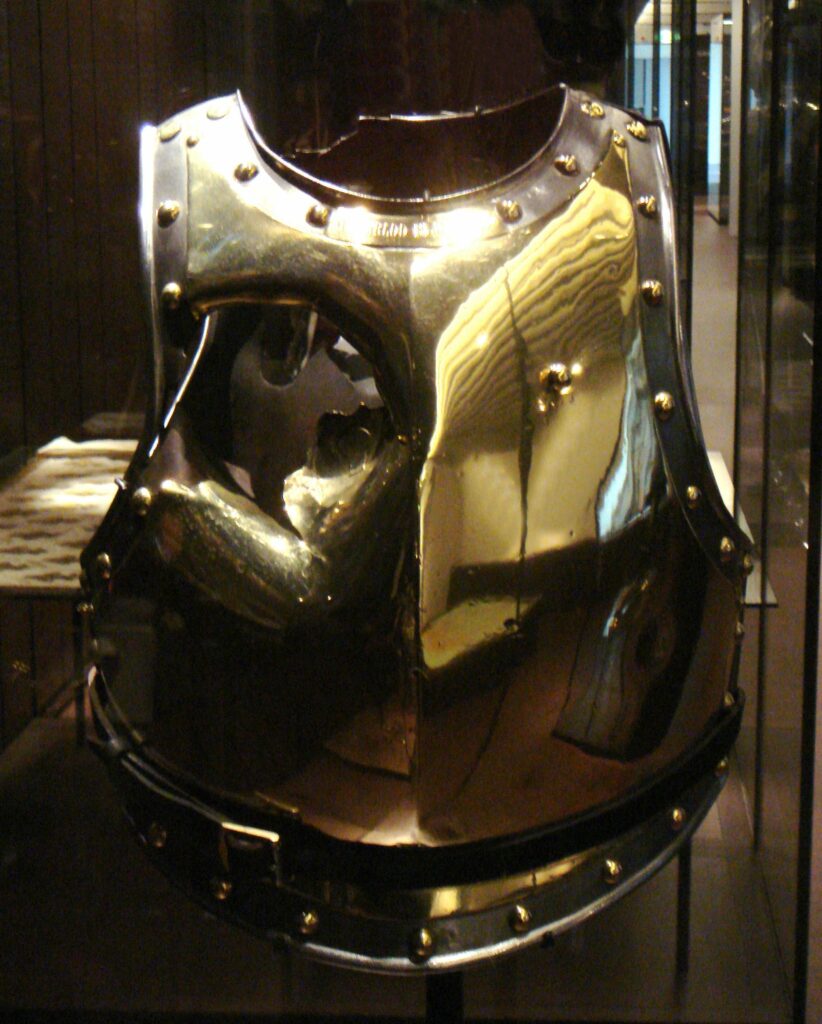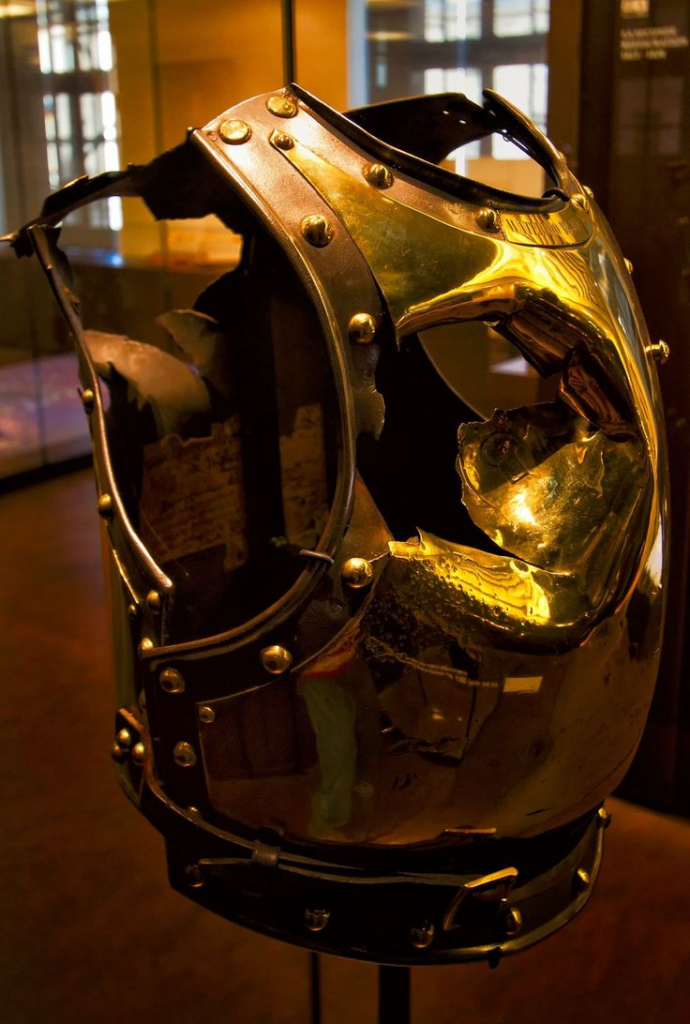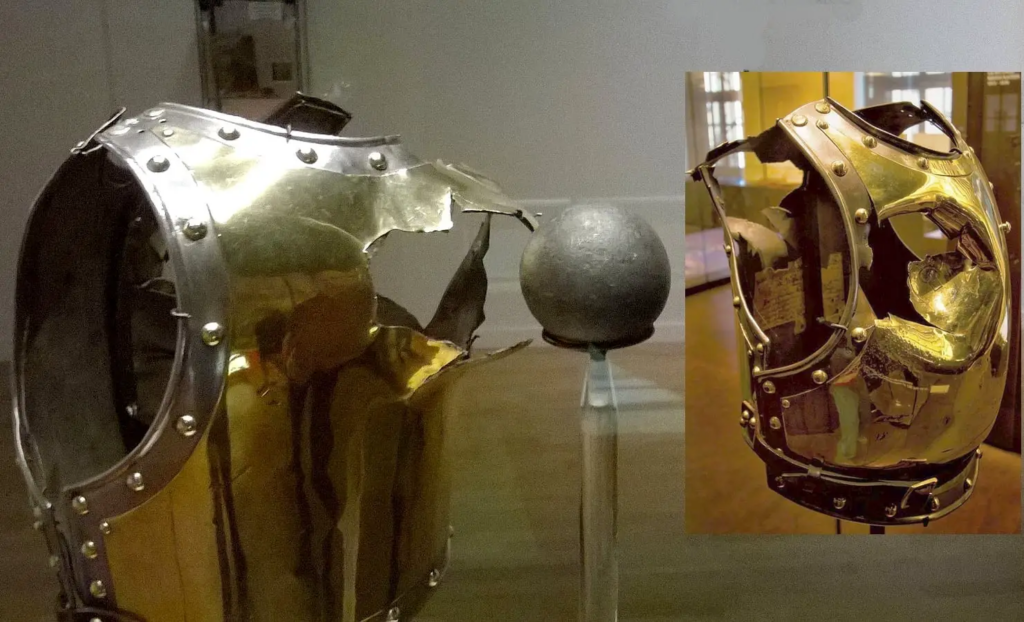In the annals of the Napoleonic Wars, countless stories of bravery and sacrifice lie hidden. One such tale is that of Antoine Fauveau, a 23-year-old French cuirassier who fought and fell at the Battle of Waterloo in 1815. A weathered cuirass, once worn by Fauveau, now serves as a poignant reminder of his sacrifice.
Inside the padding of this battle-scarred armor, a pay book revealed intimate details about the young soldier. Fauveau was a freckled dairyman on the cusp of marriage, with striking blue eyes and a hooked nose. His cuirass, a silent witness to the horrors of war, invites us to reflect on the human cost of conflict and the sacrifices made by those who fought in the Napoleonic era.
The Battle of Waterloo: A Fateful Day

On June 18, 1815, Antoine Fauveau donned his armor for the last time. The Battle of Waterloo, second only to Borodino in its devastation during the Napoleonic Wars, would claim his life along with thousands of others.
The events of that fateful day unfolded as Napoleon’s French forces clashed with the Duke of Wellington’s allied army and Prussian reinforcements. The battle was a brutal, chaotic affair, with both sides suffering staggering losses. Cannon fire, musket balls, and the relentless clash of steel cut down men by the hundreds.
Fauveau, a young cuirassier in the thick of the fighting, must have faced the chaos and carnage with a mix of fear, adrenaline, and duty. As the battle raged on, he and his comrades charged into the fray, their heavy cavalry armor glinting in the sun. But the tide of the battle would ultimately turn against the French.
The Soldier’s Final Moments

It’s believed that Antoine Fauveau fell victim to a cannonball during the battle, his armor later stripped by looters. His remains, like those of many comrades, were likely consigned to a mass grave – a grim testament to war’s brutality.
The final moments of Fauveau’s life remain shrouded in mystery. Did he die instantly, or did he suffer in agony on the battlefield? Did he have time to utter a final prayer or think of his beloved back home? These unanswered questions only add to the poignancy of his story.
A Lasting Legacy
Though Fauveau’s ultimate fate is unknown, his cuirass endures as a powerful symbol. This battle-scarred armor does more than tell one soldier’s story; it compels us to honor all who have fallen in war and to strive for a future where such sacrifices are no longer necessary.
The cuirass of Antoine Fauveau is a tangible link to the past, a physical remnant of the Napoleonic Wars that challenges us to never forget the human cost of conflict. It invites us to reflect on the lives cut short, the families torn apart, and the immense suffering that war inflicts upon individuals and societies.
As we gaze upon this weathered cuirass, we are reminded of the fragility of life and the profound impact that a single moment can have. Fauveau’s story, like so many others, serves as a sobering reminder of the true price of war and the importance of pursuing peace and understanding between nations.

Honoring the Fallen
In the years since the Battle of Waterloo, countless efforts have been made to commemorate the sacrifices of those who fought and died. Memorials, cemeteries, and museums stand as testaments to the bravery and resilience of the men who took up arms during the Napoleonic era.
One such memorial is the Lion’s Mound, a towering artificial hill erected on the battlefield of Waterloo. Visitors can climb to the top and gaze out over the rolling fields, imagining the chaos and carnage that unfolded there two centuries ago. The mound serves as a poignant reminder of the human cost of war and the importance of preserving the memory of those who gave their lives.

Conclusion
The story of Antoine Fauveau, a young French cuirassier who perished at the Battle of Waterloo, is a powerful reminder of the human cost of war. His weathered cuirass, a tangible link to the past, invites us to reflect on the sacrifices made by those who fought in the Napoleonic era and to honor their memory.
As we gaze upon this battle-scarred armor, we are compelled to consider the broader lessons of Waterloo and the importance of pursuing peace and diplomacy in an increasingly volatile world. By keeping the stories of men like Antoine Fauveau alive, we not only preserve the past but also inspire a future where the horrors of war are consigned to history, and the ultimate sacrifice of the fallen is never forgotten.
